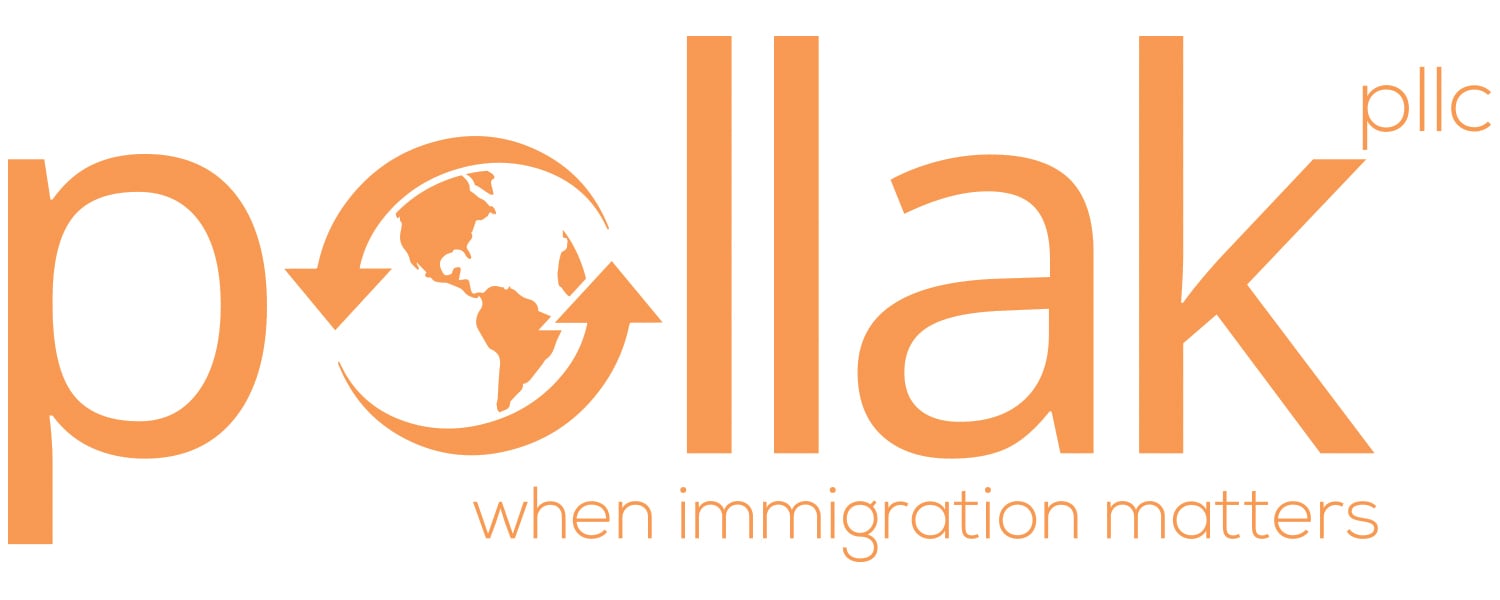For many international students on an F-1 visa, Optional Practical Training (OPT) is a critical period that bridges academic study and professional experience. OPT allows recent graduates to work in their field of study for up to 12 months—24 months for those in STEM-designated programs. But when that period ends, the clock starts ticking. With only a 60-day grace period to either leave the country, change status, or take action, the end of OPT can be a stressful and uncertain time.
If you're nearing the end of your OPT and want to stay in the United States, it's essential to act quickly and strategically. Fortunately, you have options—and Pollak PLLC can help you explore the one that best fits your background, goals, and timing. Whether you're seeking a seasoned F1 visa lawyer or long-term immigration guidance, the right support makes a difference.
What Makes Pollak PLLC Different?
When you're making major immigration decisions, you need more than just a list of options. You need a trusted legal partner who understands your situation, answers your questions, and helps you take the right next step.
Direct Access to Leadership
At Pollak PLLC, clients benefit from the direct oversight and legal strategy of Managing Attorney Karen-Lee Pollak. Your case won't be passed down to junior staff—you'll work with experienced professionals every step of the way.
Unmatched Immigration Experience
With over 27 years dedicated exclusively to U.S. immigration law, Pollak PLLC brings deep, up-to-date knowledge of visa categories, petitions, and USCIS procedures. The firm's experience spans business, employment, investment, and family-based immigration.
Responsive and Transparent Support
Clients turn to Pollak PLLC for honest, timely guidance. The firm prioritizes clear communication and updates so you never feel left in the dark about your status or next steps.
Personalized Legal Strategies
There's no one-size-fits-all answer to what comes after OPT. Whether you're pursuing a job, starting a company, or returning to school, Pollak PLLC creates custom legal plans to help you remain in the U.S. lawfully and confidently.
H-1B Visa: A Popular but Competitive Option
The H-1B visa is one of the most common paths for F-1 students who want to continue working in the U.S. after OPT. But it requires careful planning and the support of a willing employer. An experienced H1B visa attorney can significantly improve your chances of success through strategic petitioning and compliance support.
Understanding H-1B Eligibility and Process
To qualify for an H-1B visa, you must have at least a bachelor's degree and an offer of employment in a specialty occupation. Your employer must sponsor your petition and file it with USCIS, usually in early spring.
The Cap and Lottery System
The annual H-1B cap limits the number of visas issued each year, with a lottery determining who gets selected. Even highly qualified applicants may not be chosen in a given year.
Cap-Gap Extension
If your OPT expires between April and October and you have a pending or approved H-1B petition, you may qualify for a cap-gap extension that allows you to stay in the U.S. until your new status begins.
How Pollak PLLC Helps
Our firm assists both employees and employers with preparing strong, timely H-1B petitions. If you're not selected in the lottery, we'll help you identify alternative strategies to remain in status.
STEM OPT Extension: An Additional 24 Months
For graduates in science, technology, engineering, and mathematics, the STEM OPT extension offers a significant opportunity to stay in the U.S. beyond the initial 12-month OPT period. With proper planning and documentation, this 24-month extension can serve as a vital bridge to longer-term employment and immigration solutions.
Who Qualifies for a STEM OPT Extension
To be eligible, you must hold a degree from a program on the Department of Homeland Security's STEM Designated Degree Program List. In addition, your employment must be with an E-Verify-enrolled employer who agrees to comply with program regulations, including supervision and reporting requirements.
The training experience must be directly related to your degree field, and you must work at least 20 hours per week. The extension is not automatic—you must actively apply and meet all criteria.
Planning Your Application Timeline
Filing for your STEM OPT extension well before your original OPT expires is critical. You can apply as early as 90 days before your initial OPT end date. Waiting too long increases the risk of employment gaps and potential loss of status.
You are allowed to continue working for up to 180 days after your initial OPT ends while your STEM extension application is pending—as long as you file on time.
Pollak PLLC encourages clients to begin preparing early by gathering transcripts, employer information, and drafting the required Form I-983 with clear training objectives.
Staying Compliant During the Extension Period
Once approved, the STEM OPT extension comes with strict compliance requirements. You must:
- Submit validation reports every six months
- Report changes in employment within 10 days
- Complete an annual self-evaluation on Form I-983
Employers must also attest to their role in providing formal training and adhere to wage and supervision standards. Failing to meet these obligations could lead to termination of your work authorization.
How Pollak PLLC Can Help
Pollak PLLC works closely with both students and employers to manage STEM OPT applications, ensure all documents are properly filed, and establish a compliance system that minimizes risk.
We help clarify eligibility questions, draft strong training plans, and stay ahead of the reporting calendar so clients can focus on gaining valuable experience—not worrying about paperwork.
Transitioning to a Different Visa Category
If the H-1B or STEM extension isn't an option—or if you're looking for a more permanent solution—there are other employment-based visa categories to consider.
Other Employment-Based Visas
Depending on your qualifications and employer, you may be eligible for:
- O-1 Visa: For individuals with extraordinary ability in sciences, arts, business, or athletics.
- L-1 Visa: For intra-company transfers, if you've worked abroad for a qualifying company.
- TN Visa: For Canadian and Mexican nationals under NAFTA/USMCA agreements.
Strategic Fit and Legal Guidance
Each category has its own requirements and documentation standards. Pollak PLLC helps clients evaluate which options they may qualify for and assists with the application process.
Going Back to School: Maintain Your F-1 Status
Continuing your education can be a practical way to remain in the United States while working toward long-term immigration goals. This approach allows you to maintain lawful F-1 status and gain additional qualifications that may enhance your future career prospects.
How Returning to School Helps You Stay
Enrolling in a new degree or certificate program allows you to legally remain in the U.S. as an F-1 student. This option is particularly useful for individuals who are waiting for visa availability, preparing for future H-1B filings, or seeking to broaden their academic foundation.
Remaining in school can buy valuable time while opening new doors for internships, training, and employer connections that may lead to work-based sponsorship.
Transferring Your SEVIS Record
To preserve F-1 status, you must be admitted to a new SEVP-certified institution and request that your current school transfer your SEVIS record before your 60-day grace period expires. Timing is critical, as any delay in enrollment or transfer can create a gap in status.
Pollak PLLC frequently advises clients on selecting eligible institutions and coordinating seamless SEVIS transfers to avoid interruptions.
Choosing the Right Program Level
Graduate programs such as Master's or Doctorate degrees often provide the most flexibility and opportunities for future immigration benefits, including eligibility for another period of OPT and, in some cases, a STEM OPT extension.
However, if graduate study isn't the right fit, you may still qualify to enroll in a second bachelor's or a specialized certificate program—as long as it represents a logical continuation or deepening of your field of study. Programs that appear to be a step backward or unrelated to your prior education may raise red flags with immigration authorities.
Long-Term Planning and Legal Guidance
Further education should be more than a stopgap—it should serve your broader immigration and professional strategy. For example, enrolling in a STEM-designated program can position you for a future STEM OPT extension. Likewise, choosing a program connected to a high-demand industry may improve your chances of employer sponsorship.
Pollak PLLC helps students align academic choices with future visa goals. From evaluating degree programs to coordinating with school officials and immigration timelines, we guide you through every step with clarity and care.
Starting a Business or Applying for Investor Visas
Entrepreneurs may be eligible for certain visa categories that allow for business ownership and operation in the U.S. These options involve more complexity but can lead to long-term immigration solutions.
E-2 Treaty Investor Visa
Available to nationals of certain countries with U.S. treaties, the E-2 allows you to run a business in which you've made a substantial investment. It's a renewable visa but does not lead directly to a green card.
EB-2 NIW and EB-5 Investor Visa
The EB-2 National Interest Waiver may be available to entrepreneurs with advanced degrees or exceptional ability who can show their work benefits the U.S. The EB-5 requires an investment of $800,000 to $1,050,000 and job creation.
Pollak PLLC works closely with startup founders, investors, and business owners to assess visa eligibility, build strong business cases, and prepare compliant applications.
Pitfalls to Avoid After OPT Ends
As your OPT period nears its end, uncertainty can quickly lead to inaction. Unfortunately, even a brief delay or misunderstanding can have lasting consequences for your immigration future. Knowing what to avoid is just as important as knowing your options.
Failing to Act Within the Grace Period
Once your OPT concludes, you enter a strict 60-day grace period. This limited window is not intended for extended planning—it's designed for decisive action. Missing this deadline could leave you out of status, which may jeopardize your eligibility for future visas or adjustment of status.
Many clients believe they have more time than they do, or wait too long to explore viable options. Planning early, ideally before your OPT ends, helps preserve flexibility and legal standing.
Misinterpreting Visa Restrictions
Visa categories differ widely in terms of eligibility, timelines, and conditions for remaining in the U.S. Some options—such as the H-1B—may allow you to stay and work, while others require travel abroad or delayed work authorization.
Assuming you can continue working while a new petition is pending could lead to unauthorized employment. Likewise, changing your field of study to remain in F-1 status without a legitimate academic progression may draw scrutiny during future applications. Every decision must align with your long-term immigration goals and comply with USCIS regulations.
Overlooking Documentation Details
Filing an application is not enough—it must be complete, consistent, and well-documented. Errors such as missing pages, unverified job descriptions, or outdated I-20 records can delay processing or lead to outright denial.
Some petitions require detailed supporting materials such as employer letters, academic transcripts, business plans, or evidence of national interest. Pollak PLLC frequently assists clients in assembling persuasive, comprehensive documentation that reflects their unique qualifications and goals.
Navigating Employment Gaps and Legal Exposure
A lapse in employment authorization—even by a few days—can have significant legal repercussions. Some individuals assume they can remain in the U.S. without work as long as their visa is pending. In reality, maintaining lawful status requires close attention to timelines and conditions attached to your current or future visa category.
Employment interruptions also affect your ability to qualify for extensions, change of status, or permanent residence. Pollak PLLC works proactively to avoid these disruptions by helping clients stay ahead of deadlines and understand the implications of each immigration step.
Why Professional Guidance Matters
Immigration law is nuanced and constantly evolving. Trying to navigate it alone often leads to missed opportunities or costly mistakes. Pollak PLLC immigration attorney services are designed to help students and professionals identify the best legal paths forward, prepare complete applications, and remain compliant at every step.
By addressing common pitfalls early and thoroughly, we help you stay in status and work toward a more secure future in the U.S.
Take the Next Step with Pollak PLLC
You don't have to navigate this transition alone. Whether you're seeking more time, a new visa, or a long-term immigration plan, Pollak PLLC can help you take the next step.
We provide personalized, professional legal guidance to help F-1 students explore and secure the right visa options after OPT. With deep experience, responsive communication, and a commitment to excellence, we help clients stay in status and move toward their immigration goals with confidence.
Pollak PLLC is an award-winning immigration law firm with offices in Dallas, Texas, and Fort Lauderdale, Florida. Contact us at info@pollakimmigration.com or call 214-307-5510 today to schedule a consultation to discuss your options. You can also see updated information on our Pollak PLLC Facebook page.




